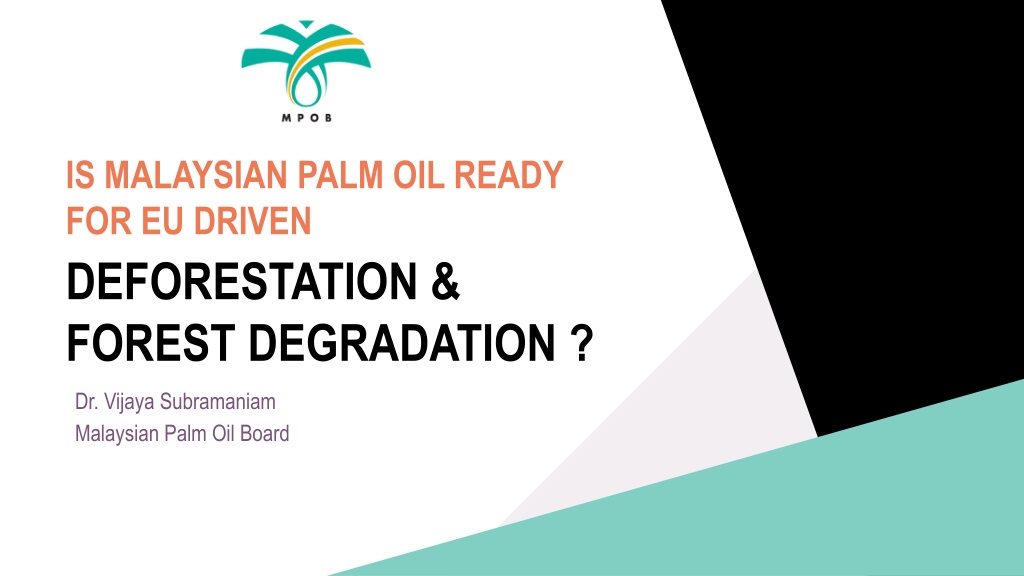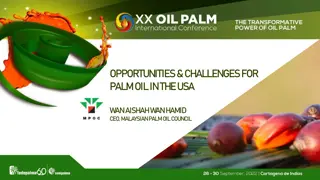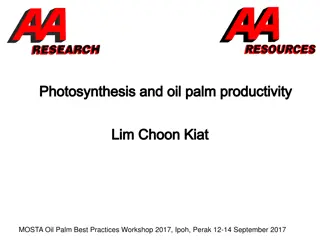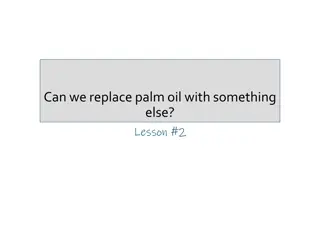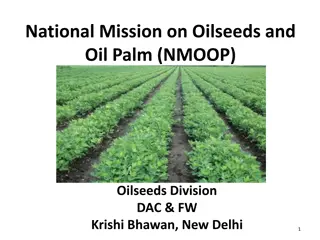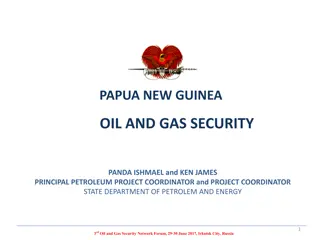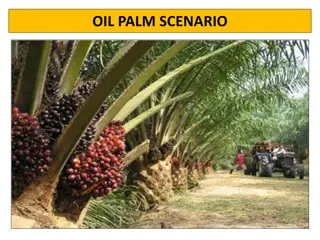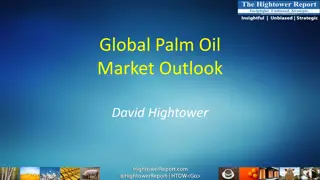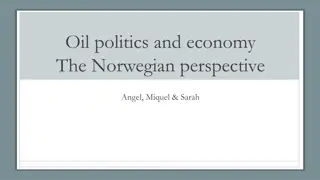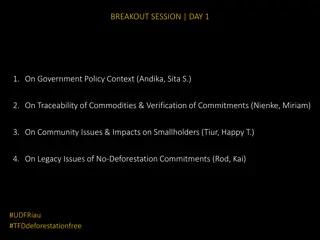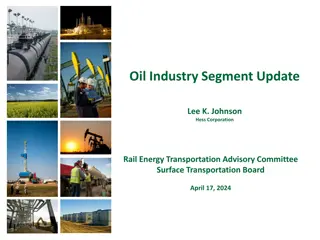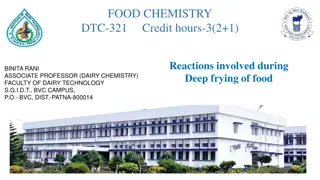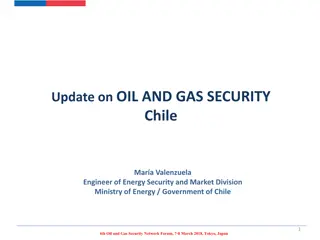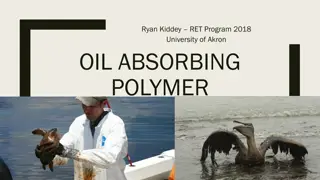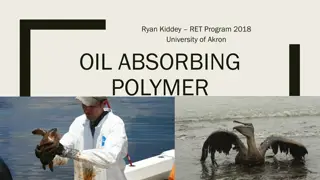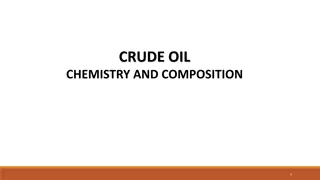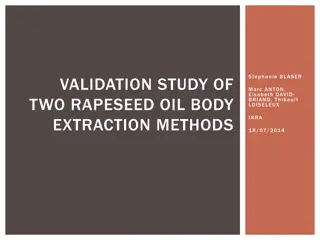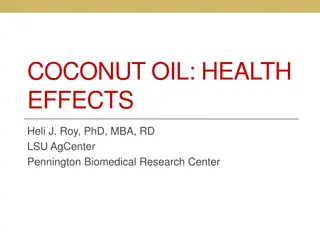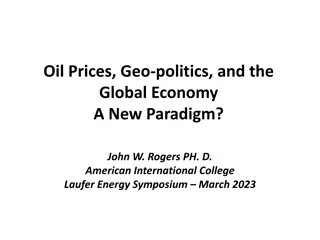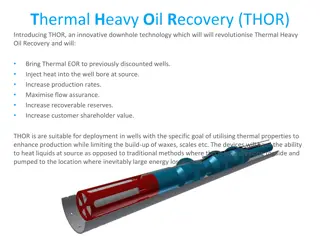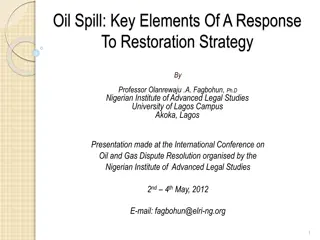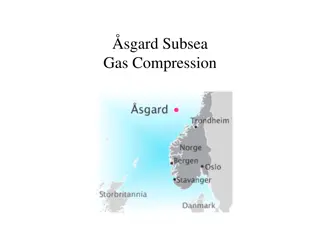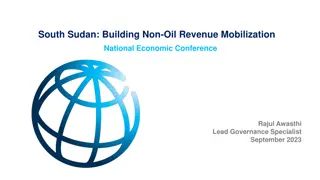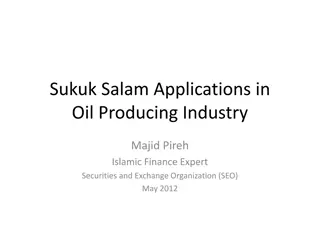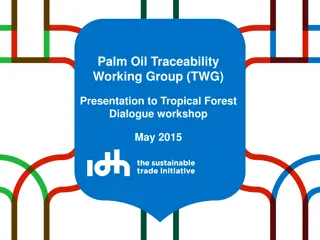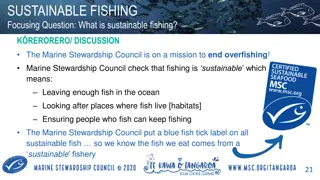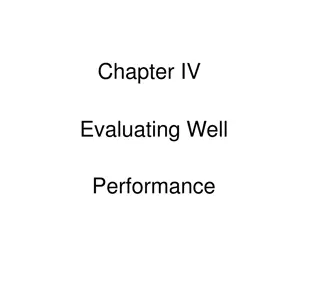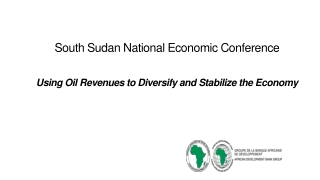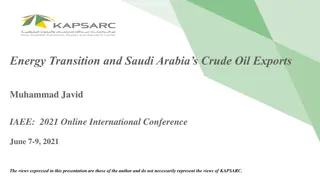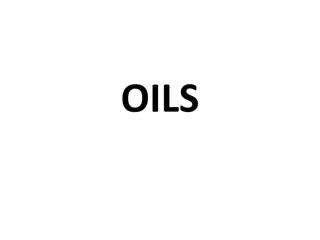Malaysia's Sustainable Practices in Palm Oil Production
Malaysia, a significant player in the global oils and fats market, faces challenges with the EU's deforestation regulations. Despite this, Malaysia is committed to sustainable oil palm cultivation, focusing on productivity over land expansion. The country has pledged to reduce GHG emissions and uphold environmental measures, showcasing its dedication to sustainable development and the UN's Sustainable Development Goals.
Download Presentation

Please find below an Image/Link to download the presentation.
The content on the website is provided AS IS for your information and personal use only. It may not be sold, licensed, or shared on other websites without obtaining consent from the author. Download presentation by click this link. If you encounter any issues during the download, it is possible that the publisher has removed the file from their server.
E N D
Presentation Transcript
IS MALAYSIAN PALM OIL READY FOR EU DRIVEN DEFORESTATION & FOREST DEGRADATION ? Dr. Vijaya Subramaniam Malaysian Palm Oil Board
EU DEFORESTATION REGULATION On 6 Dec 2022, EU reached agreement on EUDR, aiming to prevent companies from placing commodities linked to deforestation & forest degradation in the EU market Commodities affected cattle, cocoa, coffee, palm oil, soya, timber, rubber and derived products (beef, furniture, and chocolate) Companies to abide mandatory due diligence rules and provide proof that products are deforestation free and legal A trade barrier. With strict due diligence process will add to administrative burden and higher production cost
MALAYSIAS POSITION IN GLOBAL OILS & FATS Export of palm oil was 15. 72 Million Tonnes 17.1% of total global oil & fats exports 31.4% of global PO trade nd th Largest world producer of oils & fats Largest exporter of oils & fats PROJECT ONE
SUSTAINABILITY UN Global Compact Triple bottom pillar of sustainability Sustainable Food & AgricultureBusiness Principles 6 PRINCIPLES People Planet Profitability
ADDRESSING SUSTAINABLE PRACTICES MALAYSIA SCOMMITMENTTOWARDSSUSTAINABILITY Malaysia voluntarily agrees to cut the GHG emission intensity by 45% by 2030 relative to emission intensity GDP in 2005 as part of its commitment to COP21. Malaysia, as a world leader in sustainable palm oil production, has put in place various environmental measures while successfully uplifting the lives of rural communities through palm oil cultivation. This has proved that oil palm industry certainly contributes to Sustainable Development Goals. achieving the United Nations The Malaysian oil palm industry in now focusing on improving productivity and yield, rather than expanding land. Malaysia reiterates its commitment made at the Rio Summit in 1992 to retain at least 50% of the land area under forest cover.
POLICIES TOWARDS SUSTAINABLE OIL PALM CULTIVATION To cap total oil palm cultivated area to 6.5 million hectares The Cabinet of Malaysia on 22 March 2019 had endorsed the following policies toward sustainable oil palm cultivation. DAKN 2021 No more planting of oil palm peatland areas and to strengthen regulations with regard to existing oil palm cultivation on peat in further To ban the conversion of forest reserve areas for oil palm cultivation To make available oil palm plantation maps for public access
DEFORESTATION RATE IN MALAYSIA In 2021, the Global Forest Review of the World Resources Institute reported that, in 2020, Primary forest loss also declined in Malaysia for the fourth year in a row . (World Resources Institute, Global Forest Review, Forest Pulse, available at https://research.wri.org/gfr/forest-pulse. For the period from 1991 to 2000, the deforestation rate was at 0.27%, which decreased to 0.09% for the period from 2001 to 2010. From 2010 to 2015, the forested area actually increased by 2% to 18.25 million ha. More specifically, during the period from 2008 to 2018, except for 2016 and 2018, all other years recorded a net gain in forest area. There are many drivers of deforestation and studies show that oil palm cultivation is not the major cause of deforestation. Recent reports indicate that livestock, soya, and wood products cause more deforestation than oil palm cultivation. More specifically, livestock is the dominant driver of deforestation, as land area occupied by livestock is 300 times more than that used for oil palm cultivation.
ON-GOING EFFORTS The Malaysian oil palm industry is proactive in wildlife conservation efforts, working together with organization such as Sabah Wildlife Department to support wildlife rescue and conservation efforts To plant 1 million forest tree species within the next 10 years (sponsored primarily by the oil palm industry members) Central Forest Spine (CFS) - linking 4 main forest complexes which form the central mountain range in Peninsular Malaysia. CFS will be crucial in creating ecological connectivity for Peninsular Malaysia and will ensure species survival Heart of Borneo (HoB) - Malaysia participates with Indonesia and Brunei in the Heart of Borneo Initiative to conserve approximately 20 million hectares interconnected rainforest, with about 30% of the area are in Malaysia. of ecologically Establishment of the Malaysian Palm Oil Green Conservation Foundation (MPOGCF). The aim of this foundation is to fund conservation activities for the oil palm industry so that it could be carried out more effectively. The National Policy on Biological Diversity complements Malaysia s obligations under the United Nations Convention on Biological Diversity (CBD) and to implementing the Sustainable Development Goals (SDGs).
Life cycle sustainability assessment (LCSA) Life cycle sustainability assessment (LCSA) refers to the evaluation of all environmental, social and economic positive and negative impacts as well as benefits in decision-making processes towards more sustainable products throughout their life cycle. LCSA helps in clarifying the trade-offs between the three sustainability pillars, life cycle stages and impacts, products and generations by providing a more comprehensive picture of the positive and negative impacts along the product life cycle. Figure 1: Life Cycle Sustainability Assessment UNEP (2012) and Yang et al. (2020)
Life cycle sustainability assessment (LCSA) LIFE CYCLE SUSTINABILITY ASSESSMENT (LCSA) TOWARDS SUSTAINABLE DEVELOPMENT GOALS (SDG) Environment LCA (LCA) Social LCA (S-LCA) Life cycle costing (LCC)
GHG EMISSIONS & SAVINGS LUC PATHWAY Diesel (total) 22.56 Electricity from Grid 0.29 Boiler emissions 67.67 Biogas 916.56 -1.0863 PMF PKS -716.8 EFB -1240.2 land use change 2095 Nursery & Plantation 618.885 -1500 -1000 -500 0 500 1000 1500 2000 2500 kgCO2eq/ tCPO Source: Subramaniam, V., Loh, S. K., & Aziz, A. A. (2021). GHG analysis of the production of crude palm oil considering the conversion of agricultural wastes to by-products. Sustainable Production and Consumption, 28, 1552 1564. https://doi.org/10.1016/j.spc.2021.09.004
GHG EMISSIONS & SAVINGS - BEST PRACTICES PATHWAY Diesel (total) 22.56 Electricity from Grid 0.29 Boiler emissions 67.67 Biogas 94.64 Biogas capture (95%) -821.92 -1.0863 PMF PKS -716.8 EFB -1240.2 land use change 0 Nursery & Plantation 618.885 -1500 -1000 -500 0 500 1000 kgCO2eq/ tCPO Source: Subramaniam, V., Loh, S. K., & Aziz, A. A. (2021). GHG analysis of the production of crude palm oil considering the conversion of agricultural wastes to by-products. Sustainable Production and Consumption, 28, 1552 1564. https://doi.org/10.1016/j.spc.2021.09.004
SUSTAINABILITY-RELATED RESEARCH UPSTREAM:HARMONIZATIONOFOILPALMWITHNATURE
MALAYSIAN SUSTAINABLE PALM OIL (MSPO) Content of MS2530:2013
THANK YOU Dr. Vijaya Subramaniam vijaya@mpob.gov.my www.mpob.gov.my
